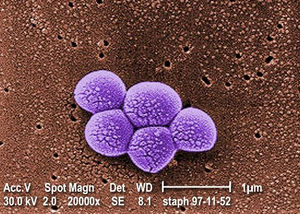African Trypanosomiasis: a parasitic disease of the CNS
Introduction

By Maeve McLaughlin
Human African Trypanosomiasis (HAT) also known as African Sleeping Sickness is directly correlated to the microscopic parasitic species known as Trypanosoma brucei. There are many species of trypanosomes but only 2 are found to infect humans, those being T.b gambiense and T.b rhodesiense. Its transmission occurs through the tsetse fly, only found in Sub-Saharan Africa hence the name of the sickness. A bite of the infected species enters the human bloodstream, allowing the parasite to colonize up through the lymph nodes. Once infected, the spread of the disease easily develops into the central nervous system which could affect anything connected to the brain or spinal cord. Once the blood-brain barrier is crossed into the CNS hosts may experience differences in circadian rhythm, insomnia, drowsiness throughout the day, and eventually potential death if left untreated. Those in late stages of the disease experience the most problems related to sleep with others facing psychological symptoms such as dementia, depression, mania, irritability, or memory loss.
At right is a sample image insertion. It works for any image uploaded anywhere to MicrobeWiki.
The insertion code consists of:
Double brackets: [[
Filename: PHIL_1181_lores.jpg
Thumbnail status: |thumb|
Pixel size: |300px|
Placement on page: |right|
Legend/credit: Magnified 20,000X, this colorized scanning electron micrograph (SEM) depicts a grouping of methicillin resistant Staphylococcus aureus (MRSA) bacteria. Photo credit: CDC. Every image requires a link to the source.
Closed double brackets: ]]
Other examples:
Bold
Italic
Subscript: H2O
Superscript: Fe3+
Sample citations: [1]
[2]
A citation code consists of a hyperlinked reference within "ref" begin and end codes.
To repeat the citation for other statements, the reference needs to have a names: "<ref name=aa>"
The repeated citation works like this, with a forward slash.[1]
Trypanosoma Brucei
Include some current research, with at least one figure showing data.<be>
Epidemiology
Every point of information REQUIRES CITATION using the citation tool shown above.
Symptoms
\Include some current research, with at least one figure showing data.
Pathogenesis
Path of Infection
Impact on the Central Nervous System
Include some current research, with at least one figure showing data.
Diagnosis & Treatment
Diagnosis
Treatment
Prevention
Immune Response
Next Steps
Conclusion
References
Authored for BIOL 238 Microbiology, taught by Joan Slonczewski,at Kenyon College,2024
